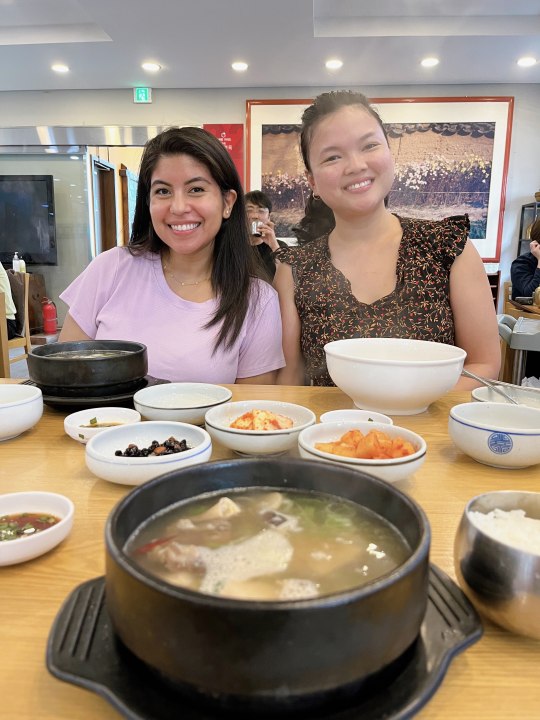#galbi tang
Text
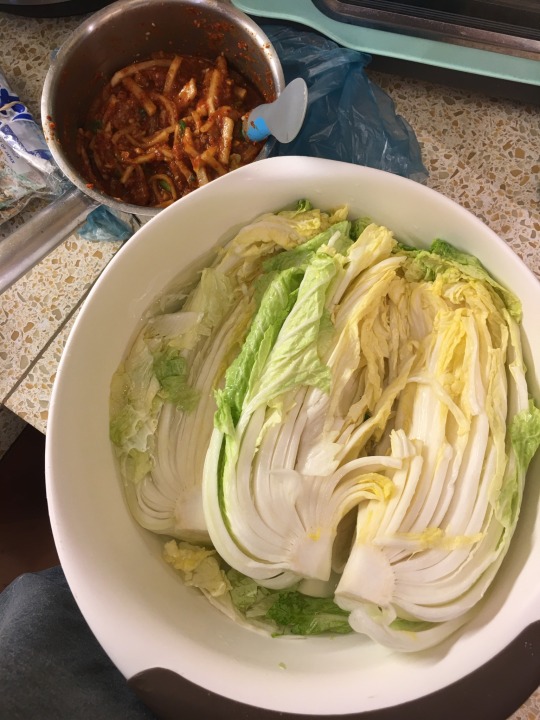


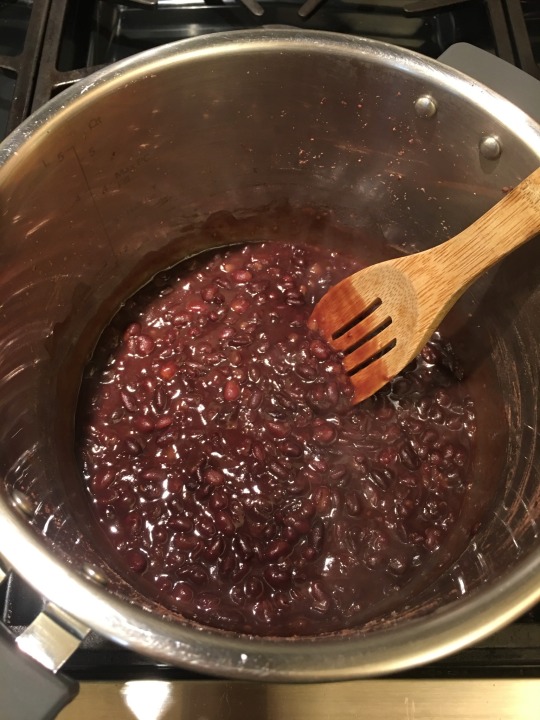
Family’s away so I’m making Korean food! (And Japanese dessert). I’ve got galbi tang—my absolute favorite soup—boiling away on the stove and I’ve always prepared some sides: spicy cucumber salad and sweet and savory fried anchovies. I’ve also been salting cabbage all day for kimchi and it’s nearly ready for the pepper paste and refrigerator. Next I have red bean paste reducing for some daifuku, which I’ve been craving for months now.
#too bad the kimchi won’t be ready for tonight. maybe I’ll cut some up and have it fresh anyway#when the ketos away the girlie will play#my dad thinks Lorena food is ‘weird’ so I can only eat that when they aren’t around#food#galbi tang#kimchi#red bean paste
3 notes
·
View notes
Photo
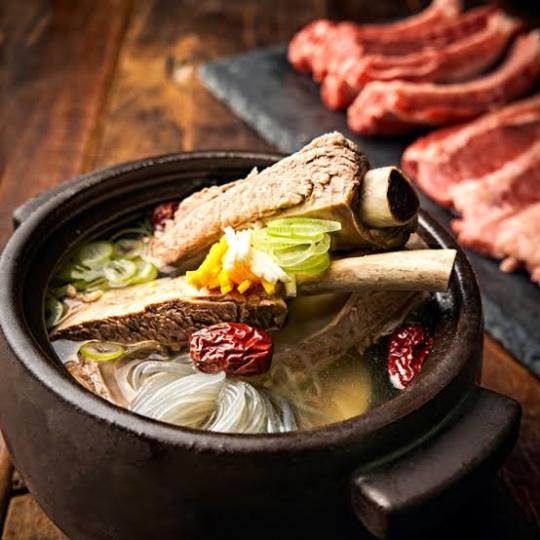
✿ カルビタン | 갈비탕 (Galbi Tang)
・カルビ+タン(韓国語でスープ)という名前の通り、牛の骨付きカルビをじっくり煮込んだ透明なスープ料理です。骨からほろりと外れる柔らかなカルビと、素材の旨みが染み出たカルビタンスープを味わいながら頂きます。具材はカルビをメインに、ネギ、ナツメ、タンミョン(韓国春雨)、朝鮮人参などが入りますが、店舗毎にやや異なります。ソウルはもちろん、釜山(プサン)など全国各地の韓国焼肉店の人気ランチメニューになっていたり、韓国冷麺専門の名店でも良く食べられます。
#カルビタン#galbi tang#갈비탕#牛排骨汤#牛排骨湯#food:韓国#韓国#韓国:牛肉#韓国:カルビ#カルビ#牛骨付き肉#牛肉#韓国:汁物#汁物#汁物:2020〜#2020〜#韓国:2020〜#タンミョン#朝鮮人参
2 notes
·
View notes
Photo

"Baek Jong-wonwhite sand beach of jangsa genius Genius"
0 notes
Note
Hii 😍
Sooo I wanted to ask for your MCs / Pairings what is something they like, some favorite colors and such. Anything you feel comfortable with sharing 🥰 I just want to know more about your characters 😍
Hope you have a wonderful day 🩷
Hi hi sunshine!! I hope you are having the most fabulous day!! 🧁🌸🌷💕 sorry it took me forever to answer this lol
Here's a few favs for the Starlight trio 🥰
LUCA
Favourite Colour:
It changes a lot — at the moment it is red and orange, but they often like foresty, green, earthy palettes
Favourite Food/Drink:
Black and/or iced coffee, energy drinks, Skittles, salty snacks
Favourite Hobbies & Ways To Relax:
Dance (esp. Ballet, contemporary, and urban)
Drumming
Balisong flipping
Re-watching movies they’ve seen before, snuggled up with Cas and Gabe
Yoga w Gabe
Driving places with Cas in his ugly little car lol
Collecting little trinkets
(Luca will absolutely steal stuff from his friends lol. With Cas and Gabe (and his best friend Viktor), he’s sneaky, bc he knows they don’t actually care, but with other friends he normally asks permission by holding up the thing he wants and going “I’m stealing this” lol)
GABRIEL
Favourite Colour:
Autumnal palettes (like burnt orange, burgundy, deep gold, etc), as well as soft, muted hues
Favourite Food/Drink:
Chamomile tea, pistachio ice cream, coconut milkshakes, alfajores, coquito tres leches cake, any of his father’s recipes for home-cooked meals. Gabe isn't vegan but he does often eat a lot of plant-based food!
Favourite Hobbies & Ways To Relax:
Cooking (especially for other people)
Cleaning (lol, I know, but having a clean and well-organised home is like good self-care for Gabe)
His 5 step-skincare routine
Reading, especially long fantasy novel series
Playing his guitar and singing
Yoga w Luca
Muay Thai
Recently, photography!
CAS
Favourite Colour:
Black, red, purple, blue — dark colours with a night aesthetic
Favourite Food/Drink:
Galbi-tang, banana-mat uyu, red bean bungeo-ppang with vanilla ice cream, hot sauce! (he puts hot sauce on everything lol)
Favourite Hobbies & Ways To Relax:
Taking long, hot showers
Hanging out with his Venandi/Flagstone Cove buddies at the fighting ring, sparring, boxing
Sketching or painting, spraypainting
Driving places with Luca in his totally awesome car
Getting little adrenaline hits by doing things like cliff diving
Also - I associate Cas with the Moon, Gabriel with the Sun, and Luca with the Stars ✨✨✨
11 notes
·
View notes
Text



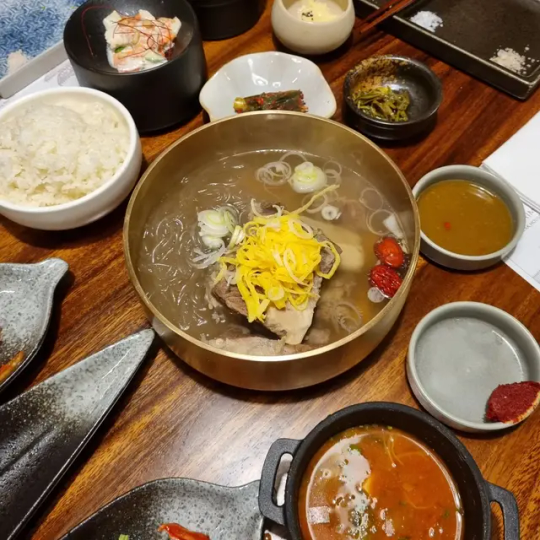
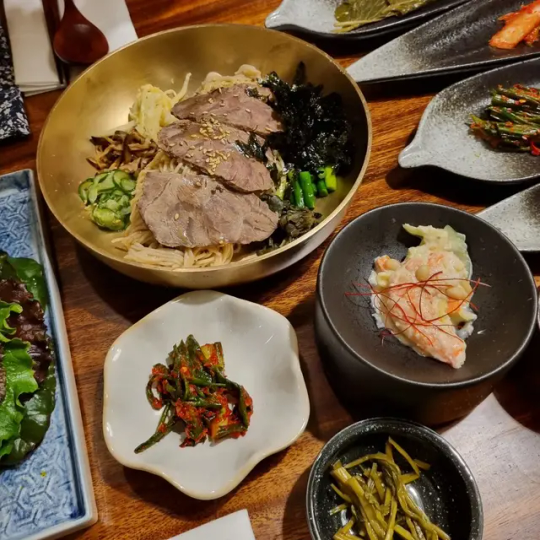
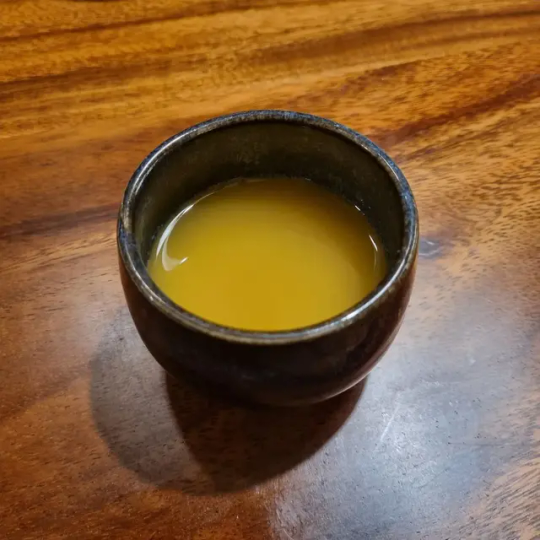

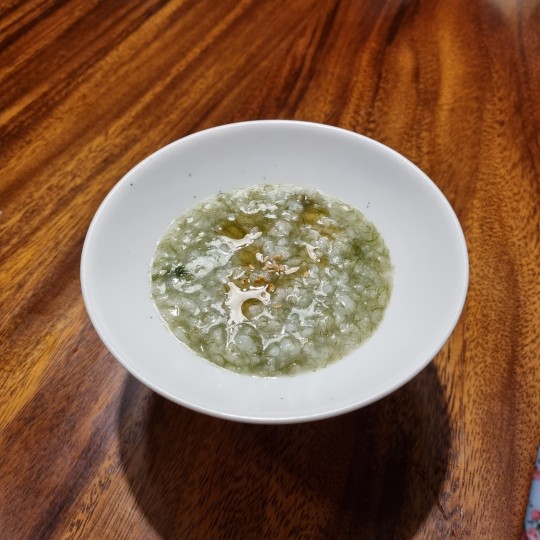
20/1/2024 - Lunch
Prices here have not included GST and service charge.
📍D'RIM Korean Steak House, Mandarin Gallery
🍜 D'RIM Signature Noodle ($33)
Feels like the ultimate healthy noodles. Beef was tender. The dish came together with the help of very tasty perilla oil. An oil that went well with all the barbeques too.
🐮🥣Galbi Tang ($36)
Friends didn't like this. Tastes quite familiar, it's slightly peppery. Have to agree that while the beef was fall-off-the-bone tender and soup had a moderate tastiness, it wasn't worth it.
🦪 Oyster Kimchi ($18)
Kind of disappointing. And rather expensive. Somehow it doesn't go that well together. Needs some sweetness to balance out that salty. (maybe a sweeter type of kimchi)
Everything was prepared with care. A nice fancy place to go to with good vibes. Even though things were a tad overpriced, I still want to go back for the cold noodles.
3 notes
·
View notes
Text

[230407] seungmin bubble update
During the two days in Korea I ate galbi-tang, oebok jengban, kimchi jjigae, doenjang jjigae, waffles, deopbab I recharged with that and Got on the plane again
4 notes
·
View notes
Text
GIVING BC CHARACTERS KOREAN FOOD
Magna - Soy Sauce Crab and Rice
Luck - Green Onion Pancakes
Asta - Bulgogi
Vanessa - Gopchang
Henry - Mandoo and traditional cylindrical rice cake
Zora - Jajangmyeon
Charmy - Tteokbokki
Noelle - Gamjatang
Secre - Jap Chae
Liebe - Soft Tofu Stew
Gauche - Bossam
Grey - Gimbap and Carbonara Ramen
Gordon - Samgyeopsal
Finral - Kimchi Fried Rice
Yuno - Spicy Cold Noodle
Klaus - Dongchimi and cold soup
Mimosa - Ginseng Chicken Soup
Langris - Kimchi Jjigae(kimchi stew)
Sol - Seollangtang
Leopold - Budae Jjigae
Lolopechka - Classic Korean Bibimbap
Gadjah - Galbi Tang
INFORMATION ACQUIRED
Thespruceeats.com
Hotels.com
Edition.cnn.com
#black clover#asta black clover#black clover headcanons#secre swallowtail#noelle black clover#vanessa black clover#luck black clover#yuno black clover#mimosa black clover#black clover charmy#zora black clover#black bulls henry#magna black clover#liebe black clover#black clover finral#gordon black clover#gauche black clover#grey black clover#gadjah#lolopechka#leopold black clover#sol black clover#black clover langris#klaus black clover#the black bulls#character appreciation
5 notes
·
View notes
Text
196 recipes: #86 Nordkorea
Und wieder ist ein Jahr vergangen. Irgendwie kommen wir nicht wieder in Schwung auf unserer kulinarischen Reise, die wir vor 8 Jahren als Familienprojekt gestartet haben, und die durch die Weltgeschehnisse der letzten Jahre schon ein paar Mal unterbrochen wurde. Aber wir geben nicht auf und heute stelle ich euch endlich wieder ein Rezept vor. Das ist unsere Nummer 86 von 196, ein traditionelles Gericht aus Nordkorea, eine Suppe mit Rinderrippchen namens Galbtang.
Es war nicht so einfach, die Informationen über die Essgewohnheiten der Nordkoreaner zu finden. Auf dieser Seite hier gab es zumindest ein bisschen Informationen. Und aus der kurzen Liste der traditionellen Gerichte haben wir dann die o.g. Suppe gewählt (auf der Seite hat man sie Kalbi-Tang genannt, aber bei der Rezeptsuche habe ich eine andere Schreibvariante gefunden, Galbi-Tang oder Galbitang). Hier geht's zum Originalrezept.
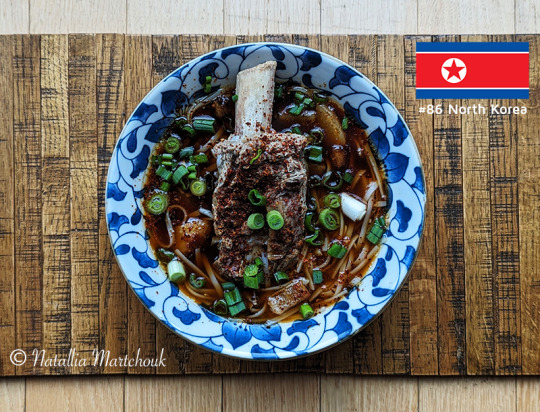
Das Rezept erwähnte 2 Varianten: eine scharfe und eine milde, wir haben und für die scharfe Variante entschieden.
Und so ging's.
Wir nahmen:
1.6 kg Rinderippchen (a.k.a short ribs)
1 mittelgrosse Zwiebel
1 Daikon-Rettich
4 Knoblauchzehen
Ca. 250g Reisnudeln
Zum Servieren / pro Portion:
1 Frühlingszwiebel, fein geschnitten
1 EL Sojasosse
1 TL Sesamöl
Chiliflocken, nach Geschmack (je nachdem, wie scharf ihr das haben wollt)
1. Rinderippchen abspülen.
2. In einem grossen Kochtopf Wasser zum kochen bringen. Rinderippchen reingeben und ca. 10 Minuten köcheln lassen.
3. Dann die Rippchen herausholen, noch einmal einzeln abspülen.
4. Den Kochtopf waschen, ca. 3 Liter Wasser hineingeben, Rippchen, Zwiebel und Daikon hinzufügen. Etwas salzen, aber nicht zu viel, weil ja spaeter noch Sojasosse hinzugefügt wird.
5. Das Wasser auf mittlerer Hitze zum Kochen bringen und ca. 2 Stunden unter dem Deckel köcheln lassen In der 2. Stunde die Hitze etwas reduzieren.
6. Rippchen rausholen und in einem Topf zugedeckt beiseite stellen.
7. Zwiebel rausholen und wegwerfen.
8. Daikon rausholen und in mundgerechte Stücke schneiden.
9. Die Brühe durch ein feines Sieb mit Küchenpapier ausgelegt durchsieben.
10. Die so entstandene klare Brühe zurück in den Topf geben. Knoblauch und Reisnudeln dazugeben und alles kurz kochen, bis die Reisnudeln fertig gekocht sind.
11. Jetzt die Suppe zusammenfügen: in mittegrosse Schüssel je Portion 1 EL Sojasosse, 1 TL Sesamöl geben, 1-2 Rippchen und etwas Daikon hinzufügen, dann mit Chiliflocken und Frühlingszwiebeln dekorieren.
Das war eine gelungene Reise! Und nächstes Mal geht es nach Kosovo. Wir versuchen nicht wieder ein Jahr passieren lassen. Bis bald!
0 notes
Text
Korean American churches pull out the big stops for Christmas, cooking more elaborate meals of banquet dishes like fried mandu and jeon, the various pan-fried fritters, patties and pancakes that line the buffet trays at Korean parties; japchae, janchi guksu and other party noodles; barbecued favorites like galbi, bulgogi and the spicy pork variant, dwaeji bulgogi; fancy braises like galbi jjim and dak bokkeumtang, otherwise known as dakdori tang; and all manner of soups and stews, but predominately miyeok guk, which is, in Korean cultures, traditionally eaten on one’s birthday.
1 note
·
View note
Text
Watch "Beef short ribs soup (Galbitang: 갈비탕)" on YouTube
youtube
My kid's favorite soup lol I have to cooking this Galbi-tang a lot
0 notes
Text
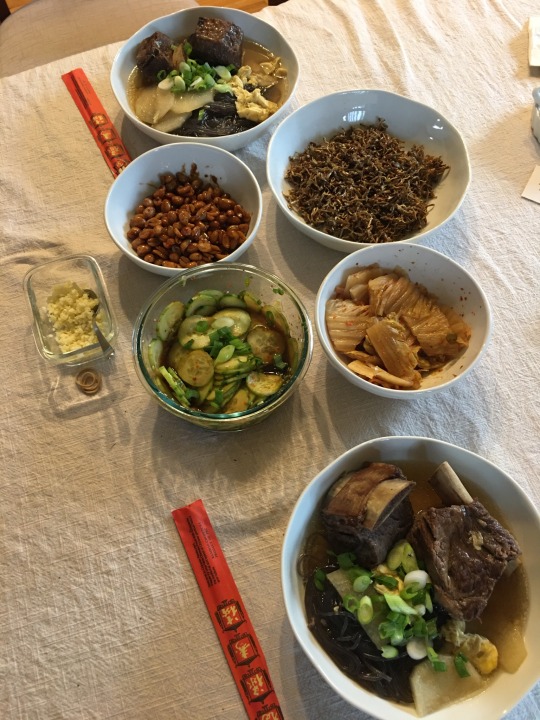
My brothers visiting which means I get to cook things no one else would normally eat with me. Tonight we had galbi tang, kimchi, stir fried spicy anchovies, braised peanuts, and cucumber salad.
#I’m a dicted to fried anchovies. so crunchy and delicious#also running out of my kimchi so I need to make more soon#first time making the braised peanuts and they were really good. i had to put them away because I was stuffed but still noshing#food#food cw
3 notes
·
View notes
Text
Blue House Korean BBQ Menu & Prices – All The Info You’ll Need


The Korean BBQ trend is on! And you definitely have to hop on now.
If you’re in California, there’s no better place to grill your own meat in the AYCE (All-You-Can-Eat) session than the Blue House Korean BBQ Restaurant.
This joint has become the premier Korean restaurant in Sacramento, where diners can unleash their inner chef in an interactive dining experience.
Add that unique element of sizzle to your evening from a variety of authentic Korean cuisines. For an adventurous dinner, choose a smokeless tabletop grill and opt for the signature marinade that includes perfectly cooked beef short rib, and sliced rib eye.
Or you can enjoy the traditional spicy garlic-simmered block cod.
Whatever your choice, Blue House Korean BBQ is a must-visit spot if you want a true culinary tour of mouth-watering Korean meals with a modern touch!
Whether you’re headed to the Sacramento location or prefer to dine at the Roseville restaurant, here are the menus and prices.
And by the way, keep an eye out for a new spot coming soon at Vacaville!
Food
Price
Appetizers
Kimchi Pancake
Savory pan-fried flour batter with vegetables and house-made kimchi
$14.00
Carpaccio
Slices of raw fish or beef with delicious-tasting sauce
$21.00
Seafood Pancake
Golden pan-fried flour with simple vegetable batter and an assortment of seafood
$14.00
Japchae
Stir-fried potato with onion, julienned carrots, mushroom, and beef
$12.00
New Age Dduk Bokki
Soft bar rice cake, seasoned with spicy red pepper sauce
$10.00
Fried Shrimp
$11.00
Fried Dumplings
$7.00
Cajun Tuna
$15.00
Blue House BBQ (A La Carte)
Blue House Galbi
Marinated prime beef short rib
$32.00
Kot Sal
Prime beef with high-quality marbling
$40.00
Spicy Grilled Chicken
Marinated chicken thigh with spicy sauce
$19.00
Saeng Galbi
Non-marinated prime beef short ribs
$40.00
Spicy Pork Bulgogi
Thinly sliced marinated spicy pork (a non-spicy option also available)
$22.00
Beef Bulgogi
Thinly sliced beef marinated in-house
$22.00
Black Angus Brisket
Non-marinated thinly sliced beef
$25.00
Galbi Jumulluk
Prime boneless beef finger short ribs marinated in-house
$32.00
Soy-Marinated Pork Belly
Pork belly marinated using in-house soy-based sauce
$23.00
Rib Eye Steak
Prime beef
$38.00
Special Pork Belly
$25.00
Prime Beef Tongue
$25.00
Salmon, Lobster Tail, Scallop, Black Tiger Shrimp, and Squid
$40.00
Grilled Fish
Salmon Steak
Tasty Korean char-broiled salmon
$18.00
Char-Broiled Mackerel
$17.00
Soup & Stew
Galbi Tang
Traditional slow braised beef short ribs and noodles made in beef broth soup
$16.00
Spicy Cod Stew
Specially seasons cod stew with tofu and veggies
$18.00
Soft Tofu Stew
Korean silken tofu stew prepared in a hot savory beef broth with vegetables, mushroom, dumplings, and seafood
$13.00
Sun-Dried Cabbage Galbi Tang
Slow braised beef short ribs with chopped garlic, green onions, and dried cabbage in a beef bone broth soybean soup
$15.00
Miso Stew
Tofu and vegetables with soybean paste stew
$13.00
Kimchi Stew
Traditional Korean kimchi stew with beef, onion, and tofu
$12.00
Pollock Stew
Pollock with vegetables prepared in a hot stone pot
$12.00
Soft Tofu Stew and Mackerel
$18.00
Stuffed Tofu Soup with Seafood
$14.00
Blue House Specials
Stone Pot Octopus
Spicy octopus stir-fried with vegetables
$26.00
Dongani Jjim
Beef knuckle with red chili dressing and mixed greens
$18.00
Chilean Sea Bass
Perfectly broiled Chilean sea bass steak and teriyaki sauce
$37.00
Braised Cod
A thick slice of Korean radish with well-steamed sea bass prepared in a warm sauce of spicy red pepper
$30.00
Braised Short Ribs
Simmered short ribs and veggies in sweet soy
$30.00
Braised Black Cod
Simmered black cod with veggies in sweet soy sauce
$30.00
Braised Spicy Monkfish
$35.00
Lunch Specials
Bibimbap
Steaming white rice with sauteed bean sprouts, black mushroom, various vegetables, and traditionally fried egg using red pepper paste
$13.00
Stone Pot Bibimbap
Crispy golden-white rice topped with sauteed zucchini, shredded carrots, kale, black mushroom, bean sprouts, and traditionally fried egg using red pepper paste and served in a hot stone pot
$13.00
Chicken Bulgogi
Marinated chicken thigh with salad
$12.00
Sweet Bulgogi Soup
Marinated tender beef (thinly sliced) with salad
$15.00
Pollock Stew
Fish roe with slated shrimp, vegetable, and tofu
$12.00
Ugoji Galbi Tang
Cabbage and prime short rib in soybean soup
$12.00
Soft Tofu Stew
Korean comfort stew in a hot savory beef broth with vegetables, silken tofu, and choice of dumpling, seafood, or tuna
$10.00
Soft Tofu Stew Combo
Hot savory stew made with beef broth, silken tofu, and vegetables with a serving of beef short ribs on the side
$18.00
Shrimp Fried Rice
$11.00
Deep Fried Pork Cutlet
$12.00
Banto Box
$12.00
Rice & Noodle
Ojinguh Bokkum
Sauteed squid with spicy chili pepper sauce and garlic
$17.00
Bibimbap
A bed of julienned carrots, spinach, bean sprout, and mushroom served over white rice and sesame oil topped with traditionally fried egg and choice squid, vegetable, or beef
$13.00
Bibim – Naengmyun
Homemade noodle made using starch from sweet potato and served in a traditional sauce of chili pepper paste
$13.00
Mool – Naengmeyun and La Galbi
Homemade cold noodles with boiled beef, sliced cucumbers pickled radish served in chilled broth topped, and hard-boiled egg on top with choice of marinated beef or beef short ribs or on the side
$20.00
Bibim – Naengmyun and La Galbi
Marinated bone-in beef short rib with Bibim – naengmgyun
$20.00
Stone Pot Bibimbap
A bed of shredded carrots, black mushroom, kale, bean sprouts served over crispy golden-white rice topped with sauteed zucchini and fried egg in a hot stone pot and choice of squid, vegetable, or squid
$15.00
Mul Naengmyeon
$13.00
Stir Fry Kimchi Pork
$14.00
Desserts
Green Tea Ice Cream
Creamy, sweet, and rich ice cream made from green tea and several flavored creams and milk products stirred to a smooth consistency
$4.00
Mille-Feuille
$8.00
Bean Ice Cream
$4.00
Vanilla Red Ice Cream
$4.00
Red Bean Ice Cream
$4.00
Soft Drinks
Non-Bottomless
$2.00
Hot Pot
(One pot is big enough for two persons)
Beef Intestine Hot Pot
Specially prepared beef intestine with udon
$35.00
Seafood Hot Pot
A choice selection of seafood
$39.00
The post Blue House Korean BBQ Menu & Prices – All The Info You’ll Need appeared first on Fast Food Menu Prices.
Read the full article
0 notes
Photo

Dinner: Galbi Tang with Stone Pot Rice and Banchan! (at A Ri Rang Tofu House) https://www.instagram.com/p/Ck6wyHlPN2l/?igshid=NGJjMDIxMWI=
0 notes
Text
Soups
Delicious Korean SoupsAlthough Korean barbeque receives the most attention, soups and stews constitute the backbone of Korean cuisine. Grilled galbi and bulgogi were formerly reserved for rare occasions due to the scarcity of beef. But, regardless of what else is on the dinner (or breakfast) table, soup or stew is always accessible, and it can occasionally serve as a palette cleanser between bites of heavier items.Stews (denoted by the suffix "-jjigae") are often cooked rapidly, bringing a variety of ingredients together, whereas Korean soups (denoted by the suffix "-guk" or "-tang") are brothy, austere, and stewed for hours—or even days. Both dishes are meant to be served with rice on the side. Simple soups (guys) are regularly offered in restaurants with other major meals, generally for free. More elaborate and robust stews (jjigae) are occasionally served communally, marked by the use of an earthenware bowl

(ddookbaegi)."Many Korean soups have special functions."Many Korean soups have special functions. Is the earth trembling because you drank too much the night before? Try the bean sprouts, radishes, and earthy ox blood cubes in the haejangguk. Feeling sniffly, as if you’re ready to acquire the common summer cold? You may kill two birds with one stone with a cup of steaming samgyetang cooked with jujubes, ginger, and garlic—meant to prevent disease and stimulate perspiration to cool the body. You must eat ddukguk to appropriately celebrate the New Year, which is made comprised of oval slices of rice cake (dduk) and soft-cooked dumplings (mandoo). If you’ve just given birth, try savory miyeokguk, which is cooked with calming, vitamin-rich seaweed (milk) to restore nutrients lost during labor. (Miyeokguk often appears on children’s birthdays to remind them of their mothers’ difficulties.)Instead of ordinary salt, these meals are seasoned with soy sauce, salted baby shrimp (saewoojut), fermented miso (doenjang), dried anchovies (mulches), and fish sauce.
The spicy heat is provided by hot pepper flakes (gochugaru), fresh hot peppers (such as jalapenos), dried hot red peppers, or gochujang, a luxuriously spicy, thick, and somewhat sweet red pepper paste. The flavor of gochujang is a little weird but overall pleasant since it includes fermented soybeans. Beef or chicken bones, dried anchovies, kombu, or seafood are used to make the broths (but water will usually do in a pinch). Dashi powder comes in anchovy, beef, and seafood tastes and may be added to boiling water or broths by the tablespoon.Feeling overwhelmed by the menu at your favorite Korean restaurant? Let’s get to know some of Korea’s most popular soups and stews.Jjigae (Stew)Soondubu Jjigae Soondubu jjigae, a fearsome tofu stew bubbling angrily and tinged red with chilies, is so popular that entire restaurants are dedicated to perfecting it. In a clay pot with vegetables and either a seafood or beef-based broth, combine handfuls of Korean hot pepper flakes (gochugaru), soy sauce, and either beef, seafood, or a combination. Near the end of the cooking process, giant spoonfuls of custardy soft tofu (dubu) are gently added. Many traditional restaurants will serve you a raw egg on the side, which you should add while the broth is still hot. Noodles and dumplings are also served in some restaurants.Kimchi jjigaeKimchi jjigae is similar to making lemonade from old lemons—the more fermented and funky the kimchi, the better the stew. To make kimchi jjigae, combine the spicy kimchi with pork or beef and a bit of water or broth in a clay or metal pot, and simmer for at least a half hour, or until the cabbage is soft and almost melting, and its inimitable aroma drifts into your hair, clothes, and skin pores. If the kimchi is too sour, try adding a spoonful of gochujang or a pinch of sugar. The stew is served hot and steaming, and the flavor is bold, red pepper-flaked spicy with a fermented vegetal twang, a little fat from the meat, and fantastically piquant. You’ll definitely want this with white rice on the side (not to mention lots and lots of water).Jjigae DoenjangDoenjang jjigae is a simple savory stew that is a weekday staple in Korean households (in fact, it was the first stew my mother taught me to make.) It’s a mash-up of whatever’s in the fridge and pantry, made with doenjang—fermented miso pastes that many Korean cooks keep on hand in the fridge—plus whatever potato or onion is in the pantry and any vegetables (such as zucchini and hot peppers) that are laying around. Doenjang is fermented in various stages: the darker the paste, the stronger and earthier the flavor.Jjigae KongbijiKongbiji has an acquired texture and flavor, but once I tried it, I was hooked. Homemade kongbiji jjigae is a labor of love, made of either ground-up soybeans or soy pulp (the dregs after making tofu) because the dried soybeans must be soaked overnight and then pureed in a blender with water. The ground soybeans are cooked with pork ribs, garlic, broth (usually anchovy or instant dashi), and sometimes kimchi. When the soybean mixture gets hot, it bubbles up like crazy. Green onions are added at the end for a bitter crunch.Ahl JjigaeAhl Jjigae Ahl is seasoned pollack roe that is commonly served as a salty and sea-flavored banchan or with rice, topped with sesame oil and toasted sesame seeds.

The seasoned roe is simmered with broth, tofu, and red pepper flakes to make this stew. The ahl is salty enough on its own, so you don’t need much seasoning, but the stew balances the unique seafood flavor with spice from the red pepper and creaminess from the tofu. The cooking process transforms the tiny eggs from slightly juicy to firm and squeaky—it’s a lot of fun to eat.YukgaejangChili lovers will cry hot tears of joy over this rich and spicy winter soup. It’s richly flavored and bright red in color, and it’s packed with shredded brisket. The fragrant soup is usually topped with a slick of shiny red chili oil, beneath which lurk a variety of vegetables such as daikon, mushrooms, wild fiddlehead ferns, and plenty of green onions and leeks.
1 note
·
View note
Text
Delicious Korean Soups
Although Korean barbeque receives the most attention, soups and stews constitute the backbone of Korean cuisine. Grilled galbi and bulgogi were formerly reserved for rare occasions due to the scarcity of beef. But, regardless of what else is on the dinner (or breakfast) table, soup or stew is always accessible, and it can occasionally serve as a palette cleanser between bites of heavier items.
Stews (denoted by the suffix "-jjigae") are often cooked rapidly, bringing a variety of ingredients together, whereas Korean soups (denoted by the suffix "-guk" or "-tang") are brothy, austere, and stewed for hours—or even days. Both dishes are meant to be served with rice on the side. Simple soups (guys) are regularly offered in restaurants with other major meals, generally for free. More elaborate and robust stews (jjigae) are occasionally served communally, marked by the use of an earthenware bowl (ddookbaegi).

"Many Korean soups have special functions."
Many Korean soups have special functions. Is the earth trembling because you drank too much the night before? Try the bean sprouts, radishes, and earthy ox blood cubes in the haejangguk. Feeling sniffly, as if you're ready to acquire the common summer cold? You may kill two birds with one stone with a cup of steaming samgyetang cooked with jujubes, ginger, and garlic—meant to prevent disease and stimulate perspiration to cool the body. You must eat ddukguk to appropriately celebrate the New Year, which is made comprised of oval slices of rice cake (dduk) and soft-cooked dumplings (mandoo). If you've just given birth, try savory miyeokguk, which is cooked with calming, vitamin-rich seaweed (milk) to restore nutrients lost during labor. (Miyeokguk often appears on children's birthdays to remind them of their mothers' difficulties.)
Instead of ordinary salt, these meals are seasoned with soy sauce, salted baby shrimp (saewoojut), fermented miso (doenjang), dried anchovies (mulches), and fish sauce. The spicy heat is provided by hot pepper flakes (gochugaru), fresh hot peppers (such as jalapenos), dried hot red peppers, or gochujang, a luxuriously spicy, thick, and somewhat sweet red pepper paste. The flavor of gochujang is a little weird but overall pleasant since it includes fermented soybeans. Beef or chicken bones, dried anchovies, kombu, or seafood are used to make the broths (but water will usually do in a pinch). Dashi powder comes in anchovy, beef, and seafood tastes and may be added to boiling water or broths by the tablespoon.
Feeling overwhelmed by the menu at your favorite Korean restaurant? Let’s get to know some of Korea’s most popular soups and stews.
Jjigae (Stew)
Soondubu Jjigae Soondubu jjigae, a fearsome tofu stew bubbling angrily and tinged red with chilies, is so popular that entire restaurants are dedicated to perfecting it. In a clay pot with vegetables and either a seafood or beef-based broth, combine handfuls of Korean hot pepper flakes (gochugaru), soy sauce, and either beef, seafood, or a combination. Near the end of the cooking process, giant spoonfuls of custardy soft tofu (dubu) are gently added. Many traditional restaurants will serve you a raw egg on the side, which you should add while the broth is still hot. Noodles and dumplings are also served in some restaurants.
Kimchi jjigae
Kimchi jjigae is similar to making lemonade from old lemons—the more fermented and funky the kimchi, the better the stew. To make kimchi jjigae, combine the spicy kimchi with pork or beef and a bit of water or broth in a clay or metal pot, and simmer for at least a half hour, or until the cabbage is soft and almost melting, and its inimitable aroma drifts into your hair, clothes, and skin pores. If the kimchi is too sour, try adding a spoonful of gochujang or a pinch of sugar. The stew is served hot and steaming, and the flavor is bold, red pepper-flaked spicy with a fermented vegetal twang, a little fat from the meat, and fantastically piquant. You’ll definitely want this with white rice on the side (not to mention lots and lots of water).
Jjigae Doenjang
Doenjang jjigae is a simple savory stew that is a weekday staple in Korean households (in fact, it was the first stew my mother taught me to make.) It’s a mash-up of whatever’s in the fridge and pantry, made with doenjang—fermented miso pastes that many Korean cooks keep on hand in the fridge—plus whatever potato or onion is in the pantry and any vegetables (such as zucchini and hot peppers) that are laying around. Doenjang is fermented in various stages: the darker the paste, the stronger and earthier the flavor.
Jjigae Kongbiji
Kongbiji has an acquired texture and flavor, but once I tried it, I was hooked. Homemade kongbiji jjigae is a labor of love, made of either ground-up soybeans or soy pulp (the dregs after making tofu) because the dried soybeans must be soaked overnight and then pureed in a blender with water. The ground soybeans are cooked with pork ribs, garlic, broth (usually anchovy or instant dashi), and sometimes kimchi. When the soybean mixture gets hot, it bubbles up like crazy. Green onions are added at the end for a bitter crunch.
Ahl Jjigae
Ahl Jjigae Ahl is seasoned pollack roe that is commonly served as a salty and sea-flavored banchan or with rice, topped with sesame oil and toasted sesame seeds. The seasoned roe is simmered with broth, tofu, and red pepper flakes to make this stew. The ahl is salty enough on its own, so you don’t need much seasoning, but the stew balances the unique seafood flavor with spice from the red pepper and creaminess from the tofu. The cooking process transforms the tiny eggs from slightly juicy to firm and squeaky—it’s a lot of fun to eat.
Yukgaejang
Chili lovers will cry hot tears of joy over this rich and spicy winter soup. It’s richly flavored and bright red in color, and it’s packed with shredded brisket. The fragrant soup is usually topped with a slick of shiny red chili oil, beneath which lurk a variety of vegetables such as daikon, mushrooms, wild fiddlehead ferns, and plenty of green onions and leeks.
1 note
·
View note
